Selected by Ken Sehested
§ To clasp hands in prayer is the beginning of an uprising against the disorder of the world. —Karl Barth
§ Concern for peace, whether Jewish or Christian, is part of the purpose of God for all eternity. God is by nature a reconciler, a maker of shalom. For us to participate in the peacemaking purposes of that kind of God is not just morality. It is not just politics. It is worship, doxology, praise. —John Howard Yoder
§ When the economy is geared to the arming of the heavens rather than the development of the heart, neighbors and nations must learn to cry out their dissatisfaction together. —Joan Chittister, OSB
§ The demand for radical love of God is indistinguishable from the radical love of those who have no claim on us. So prayer comes to focus on that vortex: where freedom to give and receive the abundance of God’s love spills over into, comprehends, includes, becomes the essence of the splendour of love of the vulnerable and the dispossessed. —Charles Elliott
§ Everything begins in mysticism and ends in politics. —Charles Péguy
§ The more a person wants to live in the absolute of God, the more essential it is for this absolute to be rooted in the midst of human suffering. —Br. Roger of Taizé Community, France
§ The object of redemption is not that we should be rescued from the world, but that we should be rescued for it. For life! —John Douglas Hall
§ To be healed is a prelude to becoming a healer. —Daniel Berrigan
§ Meditation has no point and no reality unless it is firmly rooted in life. —Thomas Merton
§ The fruit of silence is prayer. The fruit of faith is love. The fruit of love is service. —Mother Teresa
§ Even if a man were in rapture like St. Paul and knew of one who was in need of food he would do better by feeding that person than by remaining in ecstasy. —Meister Eckhart
§ Only when we are lured out of ourselves, attached to something greater, are we moved to righteousness. —William Willimon
§ We imitate whom we adore. —St. Augustine
§ But we are his people. We have eaten at his table. We have heard his word. We are identified as the odd ones of the world, called to be at odds with the world, ordained to call into question the world’s way of doing business. —Walter Brueggemann
§ When you say [something is] “impossible” you ought to say, “relative to my present state of ignorance it’s impossible.” —Mortimer Adler
§ The joy of the resurrection seduces the miser in each of us into spend-thrift love. —John Shea
§ If you want to change people’s obedience, you must change their imagination. —Paul Ricoeur
§ The world is waiting for new saints, ecstatic men and women who are so deeply rooted in the love of God that they are free to imagine a new international order. . . . Most people despair that [it] is possible. They cling to old ways and prefer the security of their misery to the insecurity of their joy. But the few who dare to sing a new song of peace are the new St. Francises of our time, offering a glimpse of a new order that is being born out of the ruin of the old. —Henri Nouwen
§ Prayer is more than something I do. The longer I practice prayer, the more I think it is something that is always happening, like a radio wave that carries music through the air whether I tune in to it or not. —Barbara Brown Taylor
§ In our age, we need more than almost anything else to restore the political dimensions of mystical vision and the visionary dimensions of political action. . . . The vision of God and the identification of oppression [go] together. Out of the sense of divine holiness and justice [come] a sense of the viciousness of injustice and sin. Knowledge of God [leads] to a deeper knowledge of human realities. —Kenneth Leech
§ The test of sincerity of one’s prayer is the willingness to labor on its behalf. —St. John Chrysostom
§ Paradoxically, this total Instruction [God’s Spirit moving in our lives] proceeds in two opposing directions at once. We are torn loose from earthly attachments and ambitions. And we are quickened to a divine but painful concern for the world. He plucks the world out of our hearts, loosening the chains of attachment. And he hurls the world into our hearts, where we and He together carry it in infinitely tender love. —Thomas Kelly
§ Mysticism is not an escape from reality, but the opposite. It is a prayerful penetration of reality. —Ellen F. Davis
§ Christian mysticism is neither a kind of pantheistic infinity mysticism, nor an esoteric mysticism of exaltation, tending toward the self-redemption of the individual soul. It is—putting it extremely—a mysticism of human bonding. The God of Christian faith is found only in the movement of God’s love toward persons, “the least,” as has been revealed to us in Jesus Christ. Only in this movement do we find the supreme nearness, the supreme immediacy of God. And that is why mysticism, which seeks this nearness, has its place not outside, beside, or above responsibility for the world, but in the center of it. —Johannes Metz
§ f you do the prayer, the prayer will do you. —Fr. Thomas Keating
§ At the center of our pain, we glimpse a fairer world and hear a call. When we are able to keep company with our own fears and sorrows, we are shown the way to go, our parched lives are watered, and the earth becomes a greener place. Hope begins to grow, and we are summoned to the work that will give us a feeling of wellness and make possible that which we envision. —Elizabeth O'Connor
§ It is not sufficient to discuss the present crisis on the informational level alone. . . . We need to help each other process this information on an affective level, if we are to digest it on the cognitive level. —Joanna Macy
§ What we do with our lives outwardly, how well we care for others, is as much a part of meditation as what we do in the quietness and turning inward. In fact, Christian meditation that does not make a difference in the quality of one’s outer life is short-circuited. It may flare for a while, but unless it results in finding richer and more loving relationships with other human beings or in changing conditions in the world that cause human suffering, the chances are that an individual’s prayer activity will fizzle out. —Morton Kelsey
§ We trust God when we are able to let go, despite our pain and fears, and leap into life. —Jean Blomquist
§ It is in solitude that compassionate solidarity grows. In solitude we realize that nothing human is alien to us, that the roots of all conflict, war, injustice, cruelty, hatred, jealousy, and envy are deeply anchored in our own heart. In solitude our heart of stone can be turned into a heart of flesh, a rebellious heart into a contrite heart, and a closed heart into a heart that can open itself to all suffering people in a gesture of solidarity. —Henri Nouwen
§ Liturgy is a microcosm of the work which God is doing in the world, and it is there that salvation is being worked out. Liturgy must never become an alternative world to that of social reality. —Kenneth Leech
§ The job of the peacemaker is to stop war, to purify the world, to get it saved from poverty and riches, to heal the sick, to comfort the sad, to wake up those who have not yet found God, to create joy and beauty wherever you go, to find God in everything and in everyone. —Muriel Lester
§ Prayer is meaningless unless it is subversive, unless it seeks to overthrow and to ruin the pyramids of callousness, hatred, opportunism, falsehoods. The liturgical movement must become a revolutionary movement, seeking to overthrow the forces that continue to destroy the promise, the hope, the vision. —Rabbi Abraham Joshua Heschel
§ [Attempts to separate “spiritual” concerns and “social/political” concerns] . . . have been front and center ever since Pharaoh unsuccessfully tried to persuade Moses that religion had nothing to do with Egypt’s domestic policy on the status of nonindentured servants. —Robert McAfee Brown
§ The best definition of the Gospel message I ever heard is that the Gospel is the permission and command to enter difficulty with hope. —Donna Schaper
§ Sometimes the “center” to which our centering prayer calls us is smack dab in the middle of the world’s decentered, disoriented, disabled and dysfunctional life. —Ken Sehested
§ How would it change the shape of social struggle if we understood that we wrestle not just against flesh and blood but also against principalities, against powers, against the world rulers of this present darkness, against the spiritual hosts of wickedness in the heavenlies? What are the practical implications of putting on the whole armor of God and praying at all times in the Spirit (Eph. 6:10-20)? How would it change the nature of our wrestling if we did so in the context of continuous Bible study and singing and worship? . . . It is the way increasing numbers of others have learned they must live, in order to keep on struggling against the Beast without being made bestial. —Walter Wink
§ Lead me from death to life, / from falsehood to truth; / lead me from despair to hope, / from fear to trust; / lead me from hate to love, / from war to peace. / Let peace fill our heart, / our world, our universe. —World Peace Prayer, adapted from a mantra in the Hindu Upanishads
§ Ora et labora. Work and pray. —The Rule of St. Benedict
§ If my people, which are called by my name, shall humble themselves, and pray, and seek my face, and turn from their wicked ways; then will I hear from heaven, and will forgive their sin, and will heal their land. —2 Chronicles 7:14
§ . . . thy kingdom come, thy will be done, on earth as it is in heaven. —Jesus
©Ken Sehested @ prayerand politiks.org
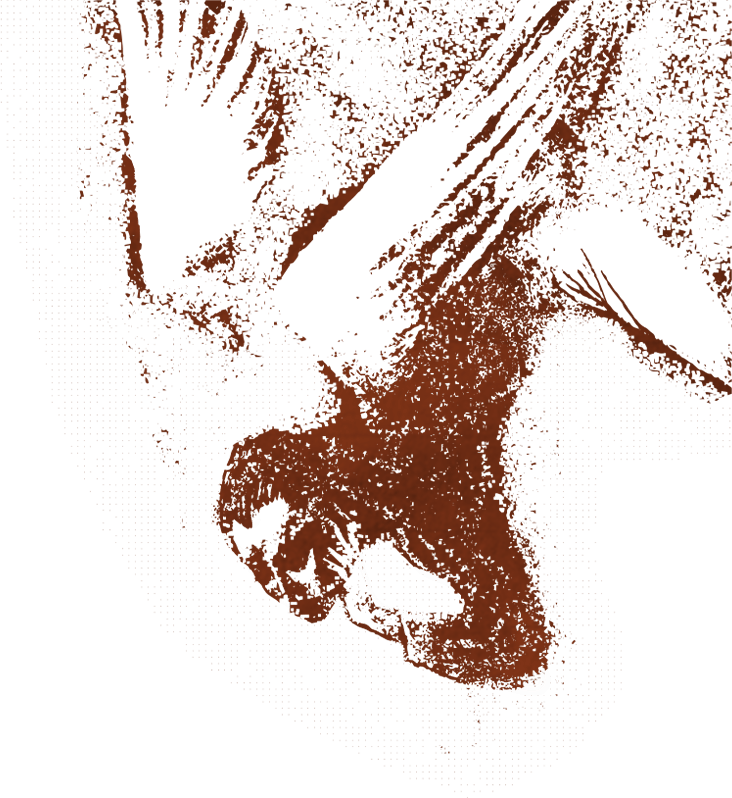
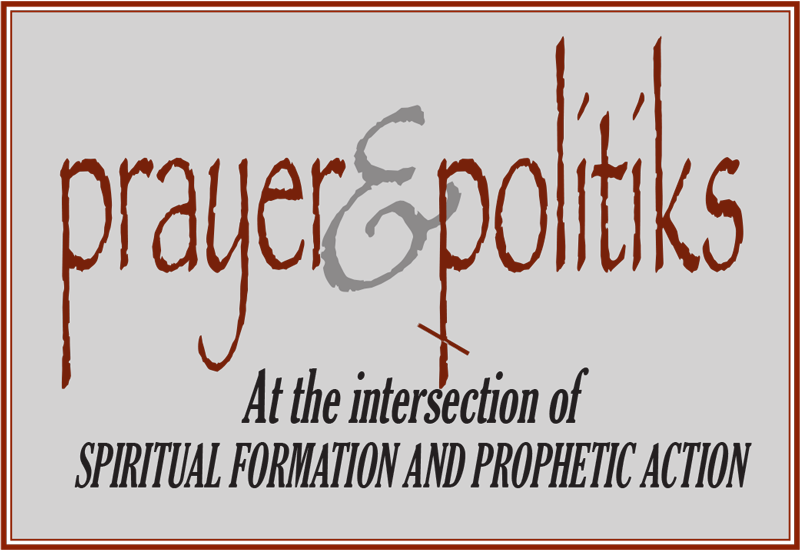
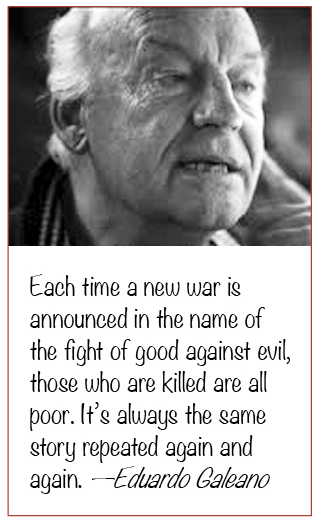 ¶ Invocation. “Earth's crammed with heaven, And every common bush afire with God; But only he who sees, takes off his shoes….” —Elizabeth Barrett Browning
¶ Invocation. “Earth's crammed with heaven, And every common bush afire with God; But only he who sees, takes off his shoes….” —Elizabeth Barrett Browning In a dramatic 2009 speech, President Obama called for a non-nuclear world, and the citations in his Nobel Peace Prize mention his efforts to this end. Yet a September 2014 investigation by the
In a dramatic 2009 speech, President Obama called for a non-nuclear world, and the citations in his Nobel Peace Prize mention his efforts to this end. Yet a September 2014 investigation by the  ¶ The American Friends Service Committee, in partnership with the Peace & Planet Mobilization for a Nuclear-Free, Peaceful, Just, & Sustainable World, have created this rousing two-minute
¶ The American Friends Service Committee, in partnership with the Peace & Planet Mobilization for a Nuclear-Free, Peaceful, Just, & Sustainable World, have created this rousing two-minute  Art (right) by Ken Sehested.
Art (right) by Ken Sehested. ¶ Hymn of assurance. Among my all-time favorite recordings is Bobbie McFerrin’s harmonic (and he sings all the parts) rendition of
¶ Hymn of assurance. Among my all-time favorite recordings is Bobbie McFerrin’s harmonic (and he sings all the parts) rendition of  ¶ Earth Day good news. A majority of Americans believe they are "morally obligated" to fight climate change, a new poll by Reuters/IPSOS has found. Of the 2,827 people surveyed in the poll, 66% said world leaders are ethically bound to reduce carbon emissions, while 72% believed that responsibility lay with themselves as well. In addition, 64% believe that rising greenhouse gases, which drive climate change, are caused by human activity. —Nadia Prupis, “Majority of Americans Agree Fighting Climate Change a “Moral Obligation"
¶ Earth Day good news. A majority of Americans believe they are "morally obligated" to fight climate change, a new poll by Reuters/IPSOS has found. Of the 2,827 people surveyed in the poll, 66% said world leaders are ethically bound to reduce carbon emissions, while 72% believed that responsibility lay with themselves as well. In addition, 64% believe that rising greenhouse gases, which drive climate change, are caused by human activity. —Nadia Prupis, “Majority of Americans Agree Fighting Climate Change a “Moral Obligation" ¶ Less good news. If everyone in the world generated as much trash as the average US citizen, we would need 4.1 more planets the size of earth to hold it all. Which may be related to the fact that we have more shopping malls than high schools.
¶ Less good news. If everyone in the world generated as much trash as the average US citizen, we would need 4.1 more planets the size of earth to hold it all. Which may be related to the fact that we have more shopping malls than high schools.
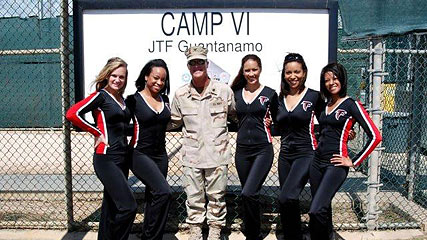 At left: Atlanta Falcon cheerleaders boost enhanced interrogators' morale at Guantánamo Bay.
At left: Atlanta Falcon cheerleaders boost enhanced interrogators' morale at Guantánamo Bay. ¶ Call to the table. “Finish, then, Thy new creation; / Pure and spotless let us be; / Let us see Thy great salvation / Perfectly restored in Thee.” —"Love Divine, All Loves Excelling," Charles Wesley (transcribed for classical guitar and performed by
¶ Call to the table. “Finish, then, Thy new creation; / Pure and spotless let us be; / Let us see Thy great salvation / Perfectly restored in Thee.” —"Love Divine, All Loves Excelling," Charles Wesley (transcribed for classical guitar and performed by  agreed to provide $5.5 million in reparations to victims of former Police Commander Jon Burge who for two decades, beginning in the early ’70s, tortured more than 100 people, all but one African American men. The city has already spent $100 million on this case in settlements and legal fees. Burge, who spent less than four years in prison, still receives his pension.
agreed to provide $5.5 million in reparations to victims of former Police Commander Jon Burge who for two decades, beginning in the early ’70s, tortured more than 100 people, all but one African American men. The city has already spent $100 million on this case in settlements and legal fees. Burge, who spent less than four years in prison, still receives his pension. ¶ Invocation. “ Love is / The funeral pyre / Where I have laid my living body. / All the false notions of myself / That once caused fear, pain, / Have turned to ash / As I neared God.” —Hãfez, 14th century Persian poet whose work is regarded as a pinnacle of Persian literature
¶ Invocation. “ Love is / The funeral pyre / Where I have laid my living body. / All the false notions of myself / That once caused fear, pain, / Have turned to ash / As I neared God.” —Hãfez, 14th century Persian poet whose work is regarded as a pinnacle of Persian literature The next day the abbot issued an even more unusual assignment to the novice. This time, he instructed the novice, go to the cemetery and utter the most profound praises to those buried in these same graves. The novice dutifully complied. But at the end of the day he reported back that not a single one among the dead had replied either to curses or praises.
The next day the abbot issued an even more unusual assignment to the novice. This time, he instructed the novice, go to the cemetery and utter the most profound praises to those buried in these same graves. The novice dutifully complied. But at the end of the day he reported back that not a single one among the dead had replied either to curses or praises. ¶ Lamentation confounded. Can you understand why those on the margin take little comfort when those in the mainstream pray for “peace”? “I’m praying for peace.” —North Charleston, South Carolina, Police Chief Eddie Driggers in a news conference following the shooting of Walter Scott, an unarmed black man by Michael Slager, a police officer. Slager fired his weapon eight times as Scott was running away. The scene was caught on cell phone
¶ Lamentation confounded. Can you understand why those on the margin take little comfort when those in the mainstream pray for “peace”? “I’m praying for peace.” —North Charleston, South Carolina, Police Chief Eddie Driggers in a news conference following the shooting of Walter Scott, an unarmed black man by Michael Slager, a police officer. Slager fired his weapon eight times as Scott was running away. The scene was caught on cell phone  Before the Mayflower by Lerone Bennett, Jr.
Before the Mayflower by Lerone Bennett, Jr.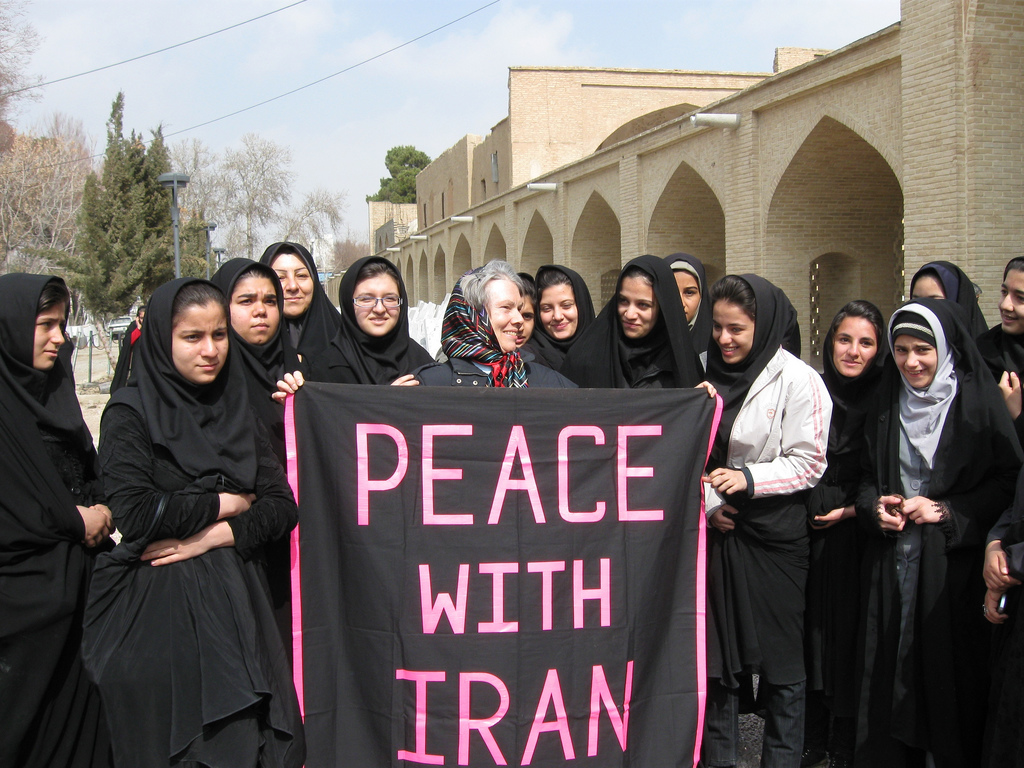 ¶ The recently agreed framework for continuing negotiations with Iran over its nuclear production program is among the most hopeful turn of events on the international scene in a very long time. This agreement is the latest step in the “Geneva Agreement” (or “Joint Plan of Action”) begun November 2013. These talks resume in June, when it is hoped that specific commitments will be made by Iran on scaling back its capacities and sanctions by the US (and others) will be loosened or abandoned.
¶ The recently agreed framework for continuing negotiations with Iran over its nuclear production program is among the most hopeful turn of events on the international scene in a very long time. This agreement is the latest step in the “Geneva Agreement” (or “Joint Plan of Action”) begun November 2013. These talks resume in June, when it is hoped that specific commitments will be made by Iran on scaling back its capacities and sanctions by the US (and others) will be loosened or abandoned. ¶ The agreement sent Iranian citizens into the streets to celebrate and Republican leaders (and some significant Democrats) into lock-and-load mode.
¶ The agreement sent Iranian citizens into the streets to celebrate and Republican leaders (and some significant Democrats) into lock-and-load mode.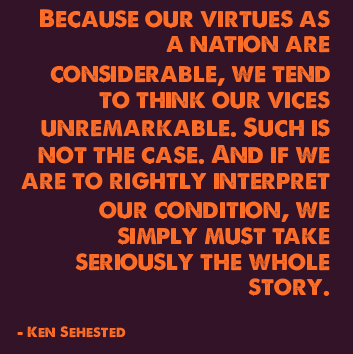 ¶ What most US citizens don’t know about the history of US relations with Iran.
¶ What most US citizens don’t know about the history of US relations with Iran. ¶ “Leadership” = warmongering? “The world is starving for American leadership. But America has an anti-war president,” House Speaker John Boehner (R-OH) said during a Capitol Hill press conference last Thursday.
¶ “Leadership” = warmongering? “The world is starving for American leadership. But America has an anti-war president,” House Speaker John Boehner (R-OH) said during a Capitol Hill press conference last Thursday.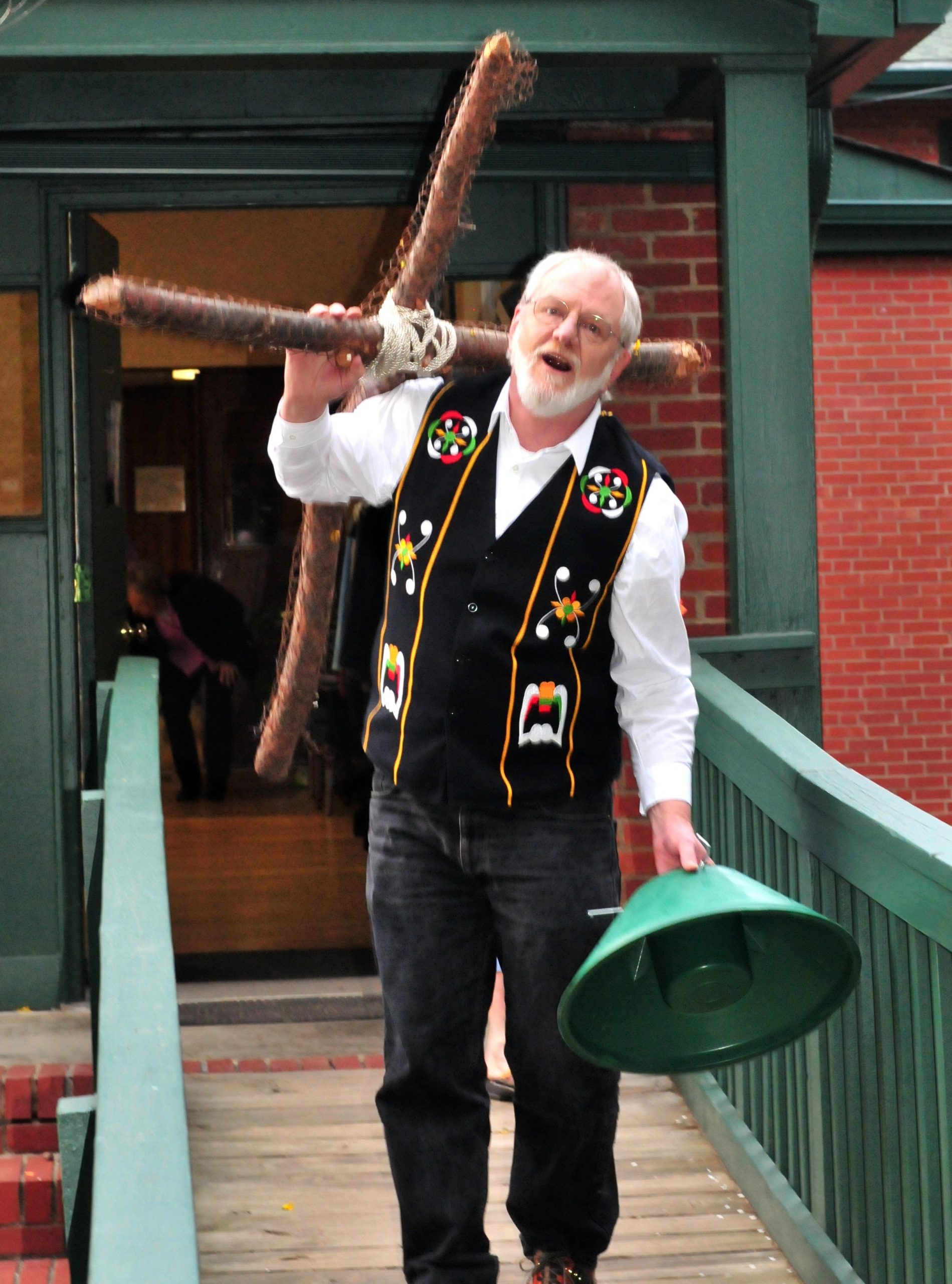 ¶ Words of assurance. “Ever since happiness heard your name, it has been running through the streets trying to find you.” —Hãfez
¶ Words of assurance. “Ever since happiness heard your name, it has been running through the streets trying to find you.” —Hãfez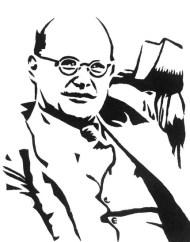 ¶ Altar call. "We are not to simply bandage the wounds of victims beneath the wheels of injustice, we are to drive a spike into the wheel itself." —German pastor and theologian Dietrich Bonoeffer. Today is the 70th anniversary of his execution in a Nazi prison.
¶ Altar call. "We are not to simply bandage the wounds of victims beneath the wheels of injustice, we are to drive a spike into the wheel itself." —German pastor and theologian Dietrich Bonoeffer. Today is the 70th anniversary of his execution in a Nazi prison.